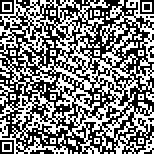| 摘要: |
| [摘要] 目的 探讨中间型/重型β地中海贫血(简称β地贫)合并自身免疫性溶血性贫血(AIHA)的临床特点及治疗方法。方法 回顾性分析2009年1月至2020年12月中国人民解放军联勤保障部队第九二三医院血液科收治的中间型/重型地贫合并AIHA的42例患者的临床特征,比较不同治疗方案的疗效。结果 42例患者的主要表现为血红蛋白下降超出预期及输血间隔时间缩短,抗人球蛋白试验阳性。32例接受激素治疗,其中标准治疗组和冲击治疗组分别有20例和12例,两者完全反应率(75.0% vs 83.3%)和有效率(91.7% vs 95.0%)比较差异无统计学意义(P>0.05)。1例一线脾切治疗后缓解。9例患者未接受任何治疗,其中3例患者自发性完全缓解。3例激素治疗无效或复发者接受脾切除术后缓解。结论 β地贫患者出现溶血加重、输血间隔时间缩短时应进行抗人球蛋白试验,诊断AIHA者应及时使用糖皮质激素治疗,难治性或复发患者可考虑行脾切除术。 |
| 关键词: 地中海贫血 自身免疫性溶血性贫血 糖皮质激素 脾切除术 |
| DOI:10.3969/j.issn.1674-3806.2022.11.07 |
| 分类号:R 556 |
| 基金项目:广西卫生健康委科研课题(编号:Z20211228) |
|
| An analysis on the clinical characteristics of patients with autoimmune hemolytic anemia secondary to thalassemia intermedia or β-thalassemia major |
|
LIAO Gui-ping, LI Jing, ZHOU Tian-hong, et al.
|
|
Department of Hematology, 923rd Hospital of the Joint Logistics Support Force of the Chinese People′s Liberation Army, Nanning 530021, China
|
| Abstract: |
| [Abstract] Objective To investigate the clinical characteristics and treatment methods for patients with autoimmune hemolytic anemia(AIHA) secondary to thalassemia intermedia or β-thalassemia major(abbreviation for β-thalassemia). Methods The clinical characteristics of 42 patients with AIHA secondary to thalassemia intermedia or β-thalassemia major who were admitted to Department of Hematology, the 923rd Hospital of the Joint Logistics Support Force of Chinese People′s Liberation Army from January 2009 to December 2020 were retrospectively analyzed. The effects of different treatment regimens were compared. Results The main manifestations of the 42 patients were a larger-than-expected decrease in hemoglobin, shorter interval between blood transfusions, and positive anti-human globulin test. Thirty-two patients received hormone therapy, including 20 patients in the standard therapy group and 12 patients in the pulse therapy group. The complete response rate (75.0% vs 83.3%) and the effective rate (91.7% vs 95.0%) were not significantly different between the two groups(P>0.05). One case was relieved after first-line splenectomy. Nine patients received no treatment, and 3 of them had spontaneous complete remission. Three patients who did not respond to hormone therapy or relapsed were relieved after splenectomy. Conclusion The anti-human globulin test should be performed on the patients with β-thalassemia when the hemolysis is aggravated and the blood transfusion interval is shortened in them. The patients diagnosed with AIHA should be treated with glucocorticoid in time. Splenectomy can be considered for patients with refractory or recurrent thalassemia. |
| Key words: Thalassemia Autoimmune hemolytic anemia Glucocorticosteroid Splenectomy |

